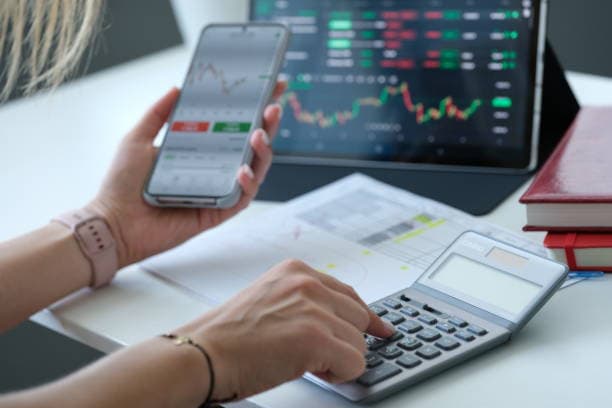Is leveraged trading different from contract trading? What is the difference between a full position and a position-by-position?
Leveraged trading and contract trading are two common and important concepts in cryptocurrency trading, but the difference between them may not be clear to many newcomers. The risk control methods of full position and position-by-position have a direct impact on a trader's capital safety and risk tolerance. Today, Mike will take you on a journey to help you understand the differences between leveraged trading, contract trading, full positions, and position-by-position, and learn how to choose the best trading method for you, so that you can be more competitive in the world of cryptocurrencies.

The difference between leveraged trading and contract trading
Lever trading and contract trading are both tools used in the cryptocurrency market to amplify trading returns, but they operate differently from each other. Leveraged trading, as the name suggests, is the use of borrowed funds to increase the size of a trade, allowing you to trade a larger amount of money with less capital and thus have the opportunity to earn a higher return. It is also relatively risky because if the market is volatile, losses will be magnified.
Contract trading, on the other hand, refers to the trading of derivatives where traders do not directly buy or sell spot assets, but rather trade on the basis of market price fluctuations. Through contracts, traders can choose to go long (bullish) or short (bearish) and can also use leverage to increase the size of the trade. The most important feature of contract trading is that traders can profit whether the market goes up or down.
Leveraged trading can be an extension of spot trading and does not necessarily require a specific contract commodity. Contract trading, on the other hand, is based on the price at a specific time in the future. It can be part of a leverage, but is more of a derivative product. The biggest difference between the two is that leverage trading is mainly used to amplify the capital of spot trading, while contract trading is based on the expected price fluctuations in the future to invest.
Risk Management Differences Between Full Position and Position-by-Position
In cryptocurrency trading, traders are faced with two main types of margin: all-in margin and position-by-position margin. The main difference between the two is the way in which risk is managed.
Full margin is a model that pools all available funds into one trade. When you place a trade, the entire amount of money in your account is used as margin to support your trade. In the event of an unfavorable market movement, all of the funds can potentially be used to close out the position, thus avoiding excessive losses on a single trade. The advantage of this approach is that it provides flexibility in the use of capital, allowing you to trade larger volumes with smaller amounts of capital. However, it is also more risky as it can lead to a rapid decline in account balance or even liquidation in the event of an unfavorable market.
In contrast to a full position, position-by-position margining calculates the margin for each trade separately, so that even if one trade loses money, the rest of the open positions remain safe. The advantage of this approach is that the risk is manageable and avoids the risk of losing all of the funds that would be lost in a full position. The position-by-position model requires traders to manage each trade individually and to be aware of the adequacy of funds for each trade.

The choice of margin model should be based on your risk appetite and trading strategy. The full position model is suitable for traders who have a strong risk tolerance and want to trade larger trades with smaller capital, while the position-by-position model is more suitable for conservative traders, especially those who want to limit the risk of each trade to an acceptable level.
Risks and Rewards of Leveraged and Contract Trading
Lever trading and contract trading both offer the opportunity to maximize gains, but they also carry risks that should not be overlooked. When using leverage, you can magnify your gains, but you can also magnify your losses. For example, if you put in $1,000 and trade with a 10x lever, that's the same as using $10,000 in capital. If the market fluctuates by only 11 TP5T, your capital may increase or decrease by 101 TP5T.
Contract trading is another way of amplifying risk, as it not only enables the use of levers, but also involves a higher level of operational complexity. In contract trading, you don't have to hold the actual cryptocurrency asset, you just trade the price fluctuations. As a result, contract trading is more flexible and allows you to short the market for downside gains. However, if the market is volatile and a trader does not place a reasonable stop loss, losses can quickly mount.
Both leveraged trading and contract trading require traders to have a certain level of market analysis and awareness of risk control. When using these tools, it is recommended to set stop-loss and take-profit points, and not to over-pursuing the leverage ratio, and to maintain a prudent operating strategy in order to minimize unnecessary risks.
Risk management techniques include setting reasonable stop-loss points, choosing lever multiples carefully, and adjusting trading strategies according to market conditions to avoid losses from over-exploitation.
How to choose the right lever multiplier and margin model.
Choosing the right leverage and margin model is one of the most important decisions in cryptocurrency trading. For most newbies, blindly using high multiples may bring unbearable risks. Therefore, understanding the market conditions and your own risk tolerance is the key to choosing the right leverage and margin model.
The choice of leverage multiplier should be adjusted according to the volatility of the market. For example, when the market is relatively stable, you can increase the leverage multiplier to maximize your returns, but when the market is highly volatile, you should reduce the leverage multiplier to minimize the risk. For novice traders, it is recommended to use a lower multiplier initially and gradually increase it with experience.
When choosing a margin model, you need to consider your risk appetite. If you want to maximize your risk control, position-by-position margin is a more appropriate choice; if you prefer to make the most of your capital in a single trade and are willing to take on a higher level of risk, then full margin offers more flexibility.
Frequently Asked Questions Q&A
Q1: Is the maximum multiplier for leveraged trading fixed?
A1: Different trading platforms have different limitations on the lever multiplier, some platforms may offer a maximum of 100x or even higher, but using such a high multiplier will significantly increase the risk, so it is not recommended for newbies.
Q2:What are the advantages and disadvantages of the full warehouse model?
A2: The full position model allows you to use all the funds in your account to trade, increasing your chances of making a profit, but it is also higher risk and can quickly result in a loss of funds if the market fluctuates too much. This mode is suitable for traders with higher risk tolerance.
Q3: How to control the risk of position-by-position model?
A3: The position-by-position model calculates each trade's capital separately from other trades, thus effectively preventing losses on one trade from spreading to other capital. The risk of this model is controllable, but you still need to carefully manage the risk of each trade and set a reasonable stop-loss point.














